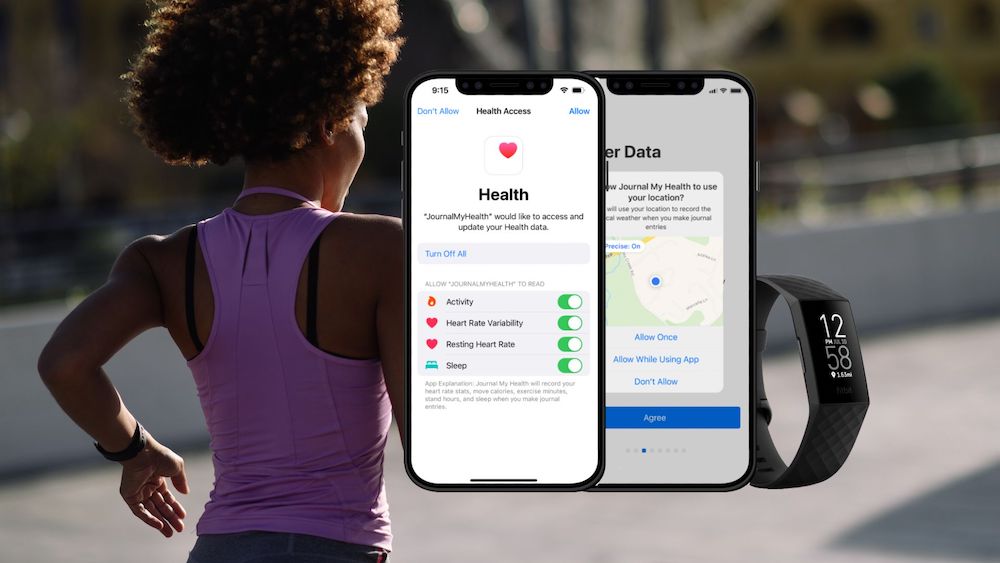Successful collaboration requires great two-way communication.
That sentiment is core to our product design philosophy here at Chariot Solutions. A critical part of our job is to help balance client and user needs against a project’s budget and technology realities.
This is especially true when building a minimum viable product (MVP). If budget and technology were no problem, you can build whatever you need without repercussions. But for those who live in the real world, every design decision has consequences.
Chariot teams work closely with clients to understand user needs as they make recommendations for priority investments. User-driven design decisions ensure a solution remains relevant and useful to those who rely on it from its early launch through to later evolutions.
In the case of Chariot client Journal My Health, Chariot Solutions CTO Aaron Mulder had a bit of an unfair advantage managing this communication because he also serves as the head of technology at the health app startup. As that bridge, he helped design and roll out two of the many features for Journal My Health: wearable integrations and medication reminders.
In both cases, the Chariot team worked hard to arrive at design decisions that maximized time and budget considerations by deploying the tech best suited to deliver on user needs.
Prioritizing wearable integrations
It’s only natural that an app-based health solution would want to integrate as many wearables and third-party platforms as possible. After all — if barometric pressure impacts one’s health, then integrating to a weather app is critical because patients will never track and enter it on their own. But is that feasible as part of an MVP?
Based on their understanding of technology constraints and because they know that it’s not as simple as turning on a device from a dashboard, Aaron and the Chariot team worked with the Journal My Health team to identify priority integrations. For example, using an iPhone to access Apple Health is simple and seamless. But getting data from a Fitbit to an iPhone requires calling out to the Fitbit cloud and could necessitate an extra sign-in, adding the risk of a missed connection or a poor user experience.
Their counsel led Journal My Health to enable Apple Watch first because it was so convenient and then Fitbit because of its market share. Now, with Chariot’s guidance, the company is considering layering in other devices through Google Health or other APIs. This all tracks with Journal My Health’s desire to deploy an MVP, then iterate and grow based on user feedback.
Growing through user feedback
These are all examples of what the Journal My Health team called Aaron and Chariot’s superpower: prioritization.
A startup building towards an MVP has hard decisions to make about what to include now versus later. Chariot teams challenge clients to plan for this future by considering the future consequences of technology and design decisions today, including the impact to overall architecture and how to avoid problems like technical debt.
Chariot’s experience and perspective can also help identify the easiest and most inclusive features for a first release and then encourage teams to press pause on more complex or narrow features, saving them for later versions. Integral to this process is user feedback, which enables design teams to make more informed decisions about which features to prioritize.
Consider the Journal My Health medication tracker. Instead of over-stuffing and overspending on the first version of the tracker, Journal My Health and Chariot first introduced a more streamlined way for patients to track which medicines they take and when. The teams are now observing user behavior and soliciting feedback so they can add the most-desired features to an updated version, such as push notifications or reminders for when to take a specific medicine.
Other features that have been added to Journal My Health since its launch by way of user suggestions include weather, blood pressure and period tracking. All these help users provide doctors with more specific, evidence-based accounts of their health and the factors that may be influencing it.
Trying to guess at the best features out of the gate would have only led to product bloat and excess expense and complexity. By helping Journal My Health agree on an MVP that provided basic functionality and value, Chariot empowered the company to grow intelligently and efficiently along with the needs of its users.
Designing for growth
Despite the Chariot team’s experience in leading MVP and iterative design processes, companies have a significant role to play as well.
Team leaders can be good partners by having clear priorities and ideas for desired features, bringing a collaborative mindset to the process, remaining flexible in their plans, and trusting the technology team. Jumpstarting the process with a list of core MPV features and an idea of tiered additions can give designers a clearer picture of how to engage and what might rise to the level of priority development.
Part of this is having a realistic understanding of the business and its limitations. Users expect Apple to launch robust, tested features that satisfy a broad range of possible needs. But a startup like Journal My Health has a much lower bar to clear and benefits more from simple, focused and well-executed feature launches that build over time.
Speak with Chariot today. We can help you radically prioritize the features of your MVP, setting you and your product up for supercharged growth.







